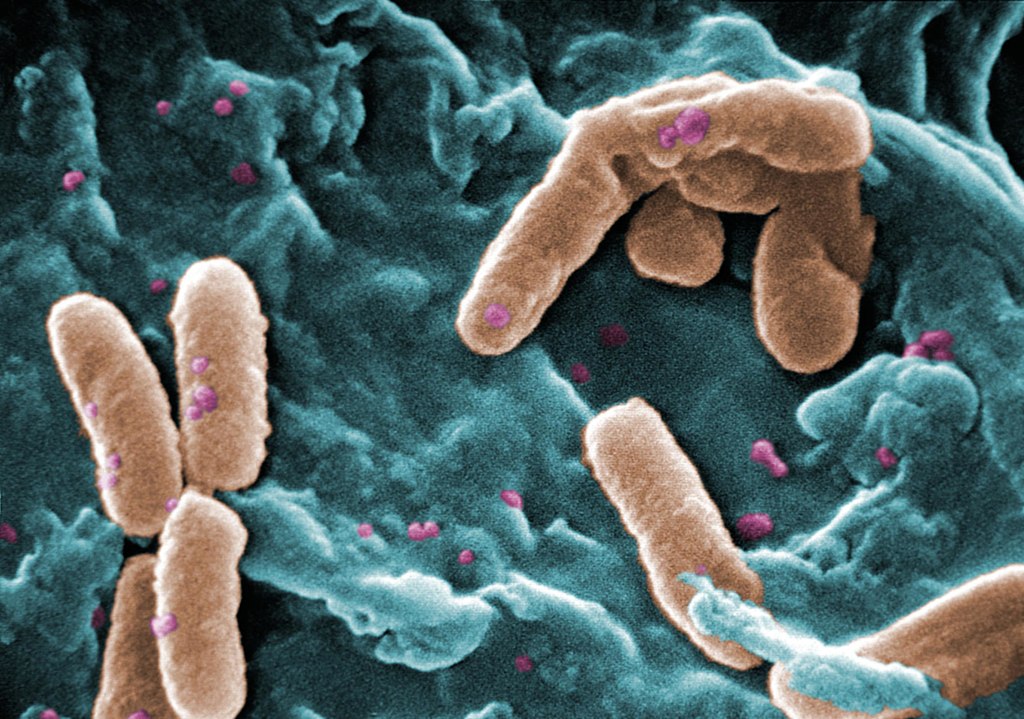Microscopic Robots Kill Pneumonia Bacteria in Lungs

Nanoengineers have developed microscopic robots, called microrobots, that can swim around in the lungs, deliver medication and be used to clear up life-threatening cases of bacterial pneumonia.
In mice, the microrobots safely eliminated Pseudomonas aeruginosa in the lungs of infected mice, resulting in a 100% survival rate. By contrast, untreated mice all died within three days after infection. The scientists describe the technology in Nature Materials.
The microrobots are not actually made of metal and plastic: instead they are algae cells armed with antibiotic-filled nanoparticles on their surfaces. The algae provide movement, which allows the microrobots to swim around and deliver antibiotics directly to more bacteria in the lungs. The nanoparticles are also coated with the neutrophil cell membranes, which absorb and neutralise inflammatory molecules produced by bacteria and the body’s immune system. This gives the microrobots a powerful anti-inflammatory tool, and the algae are biodegradable in the body, leaving no toxic traces.
The work is a joint effort between the labs of nanoengineering professors Joseph Wang and Liangfang Zhang, both at the UC San Diego Jacobs School of Engineering, both world leaders in nanoengineering.
“Our goal is to do targeted drug delivery into more challenging parts of the body, like the lungs. And we want to do it in a way that is safe, easy, biocompatible and long lasting,” said Prof Zhang. “That is what we’ve demonstrated in this work.”
The team used the microrobots to treat mice with an acute and potentially fatal form of pneumonia caused by P. aeruginosa. This is commonly seen in mechanically ventilated ICU patients. The researchers administered the microrobots to the lungs of the mice through a tube inserted in the windpipe. The infections fully cleared up after one week. All mice treated with the microrobots survived past 30 days, while untreated mice died within three days.
The microrobots enabled targeted drug delivery of only 500 nanograms of antibiotics per mouse, while an IV injection provided 1.644 milligrams of antibiotics per mouse.
“These results show how targeted drug delivery combined with active movement from the microalgae improves therapeutic efficacy,” said Wang.
“With an IV injection, sometimes only a very small fraction of antibiotics will get into the lungs. That’s why many current antibiotic treatments for pneumonia don’t work as well as needed, leading to very high mortality rates in the sickest patients,” said Professor Victor Nizet, co-author on the study and a physician-scientist collaborator of Profs Wang and Zhang. “Based on these mouse data, we see that the microrobots could potentially improve antibiotic penetration to kill bacterial pathogens and save more patients’ lives.”
The work is still at the proof-of-concept stage. The team plans to do more basic research to understand exactly how the microrobots interact with the immune system. Next steps also include studies to validate the microrobot treatment and scaling it up before testing it in larger animals and eventually, in humans.
“We’re pushing the boundary further in the field of targeted drug delivery,” said Zhang.

